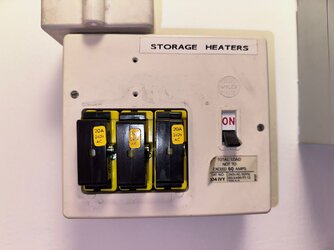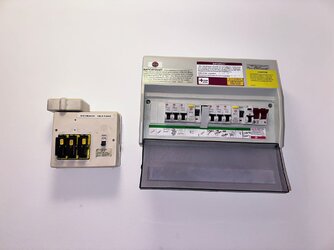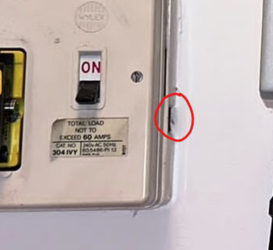Just had an EICR done and C2 (dangerous) applied to 3-way consumer unit which is exclusively for 3 x Storage Heaters. Pic below.
Yes its plastic, and fused BUT compliant with the regs at the time it was installed and is not in dangerous condition.
Should be a C3 as recommended to replace with CU & RCBOs compliant with current regs.
The regs state "Existing installations that have been installed in accordance with earlier editions of the Regulations may not comply with this edition in every respect. This does not necessarily mean that they are unsafe for continued use or require upgrading."
Electrician wont budge and am minded not to pay him as he has interpreted the regs incorrectly and raise as complaint with NAPIT.
So why has this been marked as a C2? What you you award it?

Yes its plastic, and fused BUT compliant with the regs at the time it was installed and is not in dangerous condition.
Should be a C3 as recommended to replace with CU & RCBOs compliant with current regs.
The regs state "Existing installations that have been installed in accordance with earlier editions of the Regulations may not comply with this edition in every respect. This does not necessarily mean that they are unsafe for continued use or require upgrading."
Electrician wont budge and am minded not to pay him as he has interpreted the regs incorrectly and raise as complaint with NAPIT.
So why has this been marked as a C2? What you you award it?











